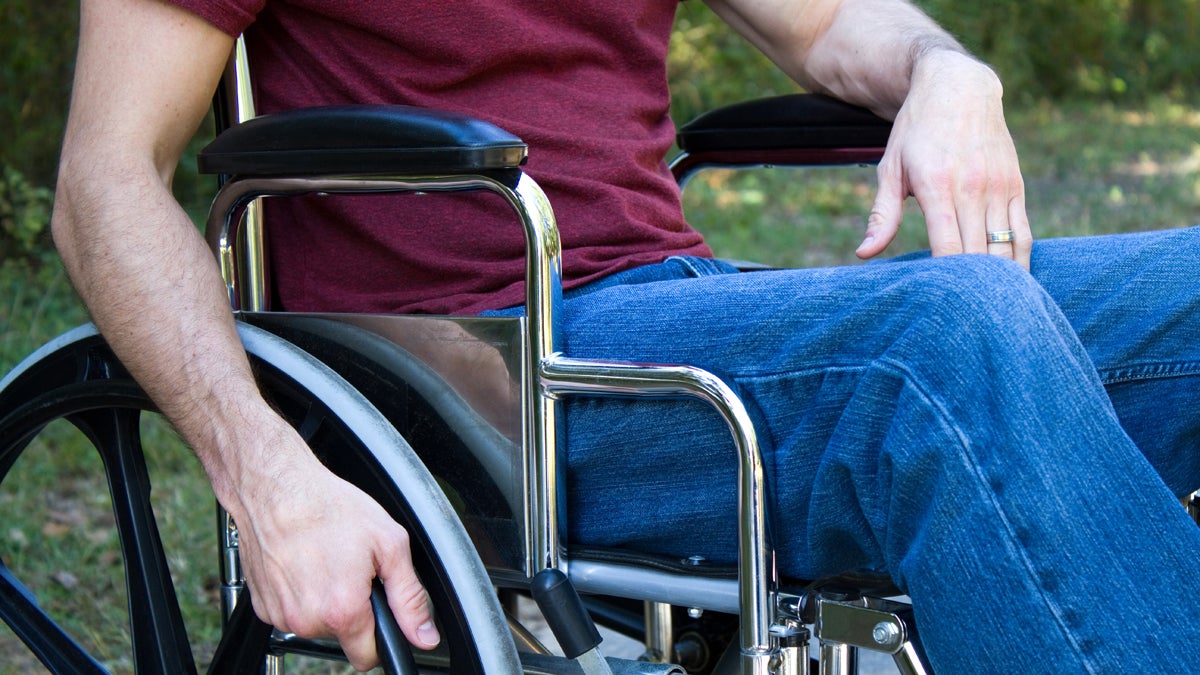News of paralyzed man walking stirs hope, but not for miracles

(Man in wheelchair courtesy of Shutterstock.com)
In the 35 years since my spinal cord injury, our whole field has us dancing with hope. This research opens up people’s minds and hearts and may give them hope. But hope is a two-edged sword.
“Paralyzed man walks”
This was the headline many of us read this week from the New York Times, CNN and the BBC. A group of physicians in Poland removed cells from a quadriplegic’s olfactory nerve (the only nerves that regenerate) and injected them into his spinal cord. I’m not clear about where the cells were injected, or when he began to recover some function, but recover he did. He has some voluntary movement in his legs and is actually able to walk with the support of a frame.
This research is breathtaking in its persistence (it’s the culmination of 40 years of research) and its possibilities.
Frankly, I don’t know what this portends for the short-term future or even the long-term for that matter. But in the 35 years since my spinal cord injury, our whole field has us dancing with hope. When I was injured, I was told What you have now is what you will have. No hope.
Be careful of hope
In my case, that was a blessing. After my period of despair and depression, I knew I had to live with the body I had. It was a blessing because I was managing the difficult life day by day and not compromising by waiting for the miracle.
I don’t know what people with spinal cord injuries are being told today. I know that this research opens up people’s minds and hearts and may give them hope.
But as I’ve written before, hope is a two-edged sword. For those of you who read the story of Pandora’s box, you might remember that all of the evils of the world were contained in that box. Despite being told not to open it, she did, and almost all of the evils got out. But she closed the door, and one of the evils stayed in the box. Hope.
I’ve known many people whose lives have been diminished because they held out hope — hope that their parents would change or that they would find the ideal spouse or that they would walk again. A few of the people I was hospitalized with went home and refused to start their lives because they knew they would walk again. Hope can lead to despair and self-absorption. Hope can lead people to feel like victims when it is dashed repeatedly.
Hope for achievable things
On the other hand, research shows that people cannot live without hope. Knowing that and knowing that these positions are contradictory, I had to do further research. Well it turns out that the kind of hope that heals is more of a strategic plan. So if one hopes for more research, one could organize people to raise money. If someone hopes for anything within his or her power, they develop steps to achieve that goal. These people tend to be happier, whether they achieve the goal or not. It seems that endorphins and dopamine are released in the brain in the active pursuit of the goal one hopes for.
Here’s one area of hope that can change the arc of our lives: Hope for well-being or comfort inside one’s own skin. This is an area of hope that we do have at least some control over. And we can generate a strategic plan here, knowing that we have little control over the outside environment and much more over the inside environment. We can cultivate well-being through generosity and gratitude and by nurturing intimate relationships.
We can increase comfort inside of our own skin by practicing opening up our hearts to others. By sitting inside of ourselves when we have uncomfortable emotions. By experiencing our lives day by day with kindness and compassion. By having the courage to share our vulnerabilities with kindred spirits. The more we open, the more we are accepted, the less we have to prove ourselves.
So, to my friends with spinal cord injury, I wish this research would develop into fruition and that anyone who wants to walk again will have that opportunity. And quickly!
But more important, I wish that, whether you walk again or not, you will experience a lifetime of well-being and comfort.
—
Dr. Dan Gottlieb is a practicing psychologist and therapist with more than 40 years of experience. He is best known as the host of “Voices in the Family,” a weekly radio program heard on WHYY-FM. He is also the author of six books, including his latest, “The Wisdom We’re Born With.”
WHYY is your source for fact-based, in-depth journalism and information. As a nonprofit organization, we rely on financial support from readers like you. Please give today.

